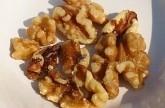Comfortable, personalized dental care! Serving patients at two convenient locations in Niagara Falls.
Wednesday, 26 September 2012
White After Labour Day?
Wear white after Labor Day? Of course! Especially when it comes to your smile. A beautiful white smile can give you confidence and make you more apt to smile. Increase your ‘face value’ with a clinical tooth whitening treatment.
Having a beautiful white smile doesn’t happen on its own. Many factors, including healthy juices and berries, wines and some medications, can stain and darken your teeth. Some not-so-healthy factors such as smoking and using other tobacco products can also make teeth yellow and dingy. Unfortunately, those stains don’t go away when you quit smoking or switch to apple juice. Once those stains creep in, you’ll need a little help to get rid of them.
There are plenty of over-the-counter whitening treatments that can help you brighten your teeth marginally but for serious whitening, we recommend an in-patient whitening*.
A high-concentration whitening can be done in the office, usually in less than an hour. With proper care and avoidance of staining agents, an in-office dental whitening can be easy, inexpensive and long-lasting.
Still have questions about dental whitening? Call us today and we can discuss your options for a brighter smile.
*Note: Children under the age of 16 should avoid whitening in order to protect the developing pulp from being damaged.
Wednesday, 5 September 2012
Healthy Fat for Healthy Gums
Ongoing research is showing that foods containing polyunsaturated fats may have the ability to not only treat, but also slow periodontitis’ progress. Periodontitis (advanced gum disease) is a chronic, bacterial infection that results in tooth and bone loss as well as inflammation contributing to arterial plaque buildup. Cold Water Fish
How can fat fight gum disease? Polyunsaturated, or “good” fats, fight inflammation. Periodontitis and other conditions associated with inflammation, such as strokes or perhaps even diabetes or rheumatoid arthritis could be slowed, treated and even reversed by these anti-inflammatory foods.
So, which fats are the “good” fats? Polyunsaturated (and monounsaturated) fats are everywhere. Add “good” fat in the form of cold water fish like salmon, trout, mackerel and herring. Include seeds and nuts like flax, sunflower, walnuts and almonds. Also, oils such as olive, coconut, safflower, soy and sunflower oils. Last but not least, don’t forget those strange fruits avocado and olives.
Study participants who had periodontitis and who ate a balanced amount of polyunsaturated fats had significant reductions in periodontitis.
Luckily, you don’t need to eat massive amounts of “good” fat to get the maximum results. While your body needs some fat to maintain its health, eating a balanced diet overall is a health benefit all its own.
If you have periodontitis, continued dental treatment and a balanced diet including “good” fats can help your teeth and gums to be their healthiest.
Subscribe to:
Comments (Atom)


